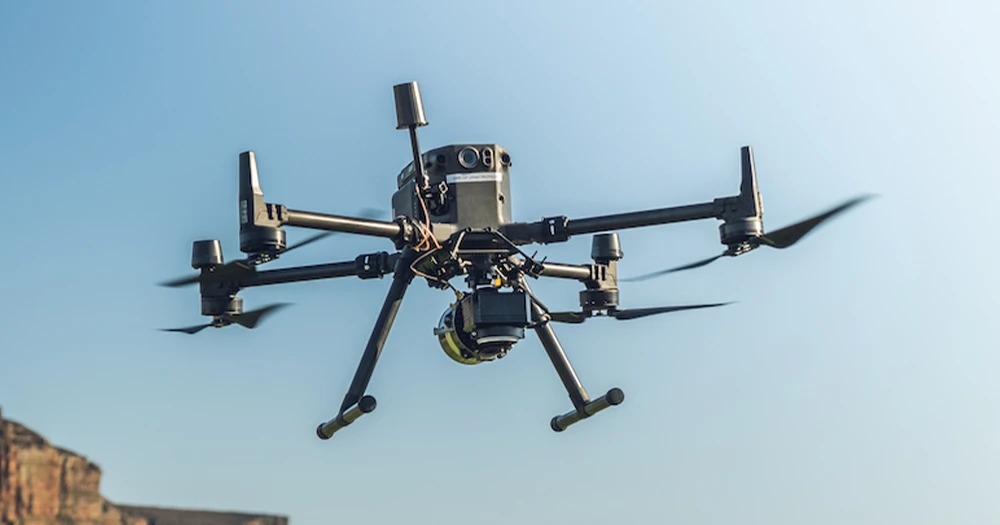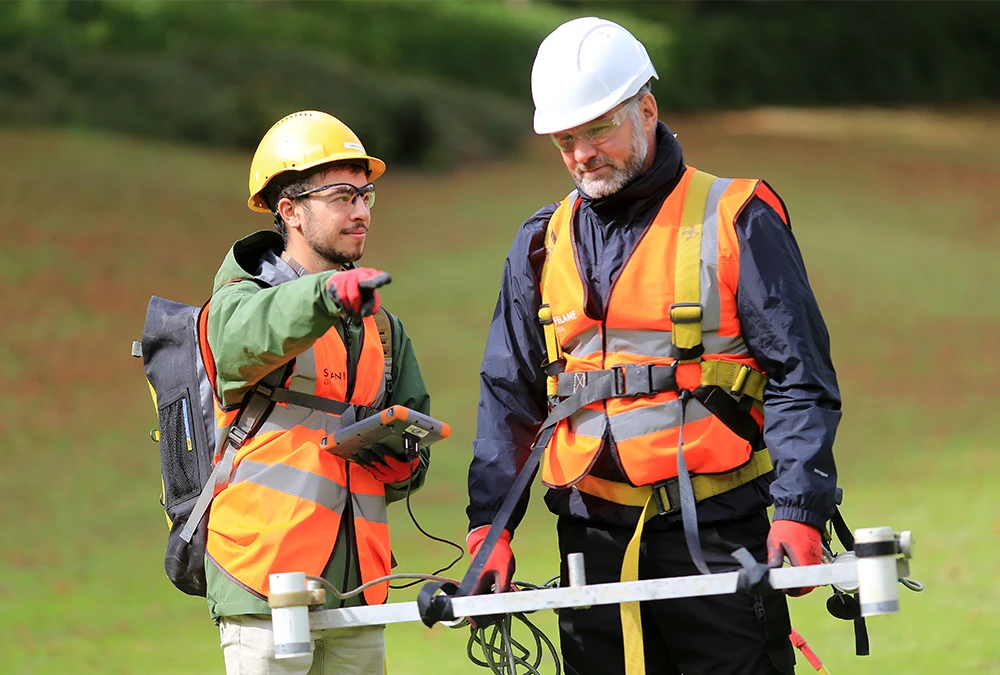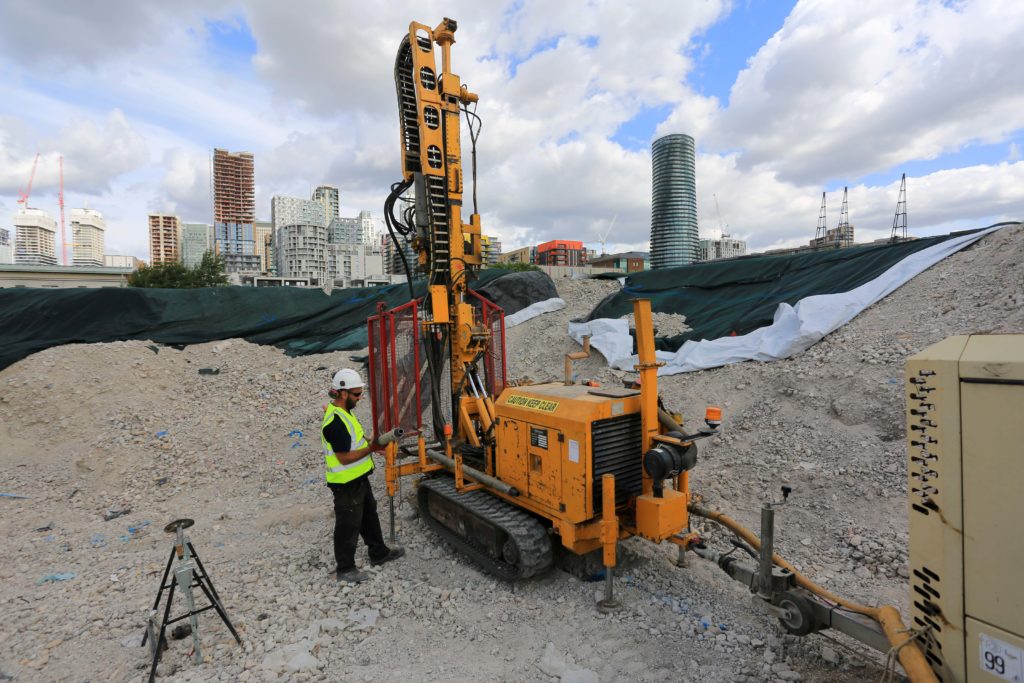
UXO survey support for Britain’s school building programme
Ahead of school building works, Igne's UXO survey and clearance services ensure our construction clients' sites are safe.

According to stage 3 of CIRIA C681, if a risk of UXO contamination has been identified on your site a UXO survey is required. UXO surveys utilise magnetometers to detect ferrous anomalies. Igne utilises the latest technology and the most appropriate methodology on a site by site basis.
Igne employs all UXO survey methodologies
Its team of explosive ordnance disposal experts will assess your site and risk before considering any timeline or budget requirements and then advise you on the most suitable survey methodology.

About
Igne's non-intrusive surveys have a wide range of application.
They provide clients with cost effective, accurate information about the location and identification of potential anomalies including unexploded ordnance (UXO) threats or hazards that are buried or located within structures.
If your project is on a greenfield site, free from significant ferrous contamination, Igne may recommend a non-intrusive magnetometer survey to detect any potential sub-surface ferrous anomalies such as grenades, mortars or projectiles.

A non-intrusive unexploded ordnance (UXO) survey uses magnetometers to detect ferrous anomalies in the ground – which could be munitions, bombs or other dangerous threats.
A detector is simply walked, driven, towed or flown across the area to be surveyed, so the ground isn’t broken. As a result, non-intrusive surveys are a quick and effective way of surveying a site to identify potential risks.
Land-based non-intrusive surveys work best on greenfield sites.
I.e., in locations where there is likely to be less data interference from ferrous objects such as existing piles, or foundations.
Such interference causes background ‘noise’
which makes accurate detection more challenging.
Using the non-intrusive survey method, Igne can detect and model items up to 4m below ground level in perfect conditions.
If a site is classed as brownfield, it’s unlikely a non-intrusive survey will be successful as previous development works will create too much data interference.
Non-intrusive surveys can be useful on expansive projects where shallow intrusive works are planned. Igne is currently conducting non-intrusive surveys ahead of construction for clients across the UK for:
The approach and speed of non-intrusive surveys
Most non-intrusive surveys are either be pedestrian (meaning they are carried out by two people walking over the ground with detection equipment) or towed (towing a sensor trailer with an all-terrain vehicle (ATV)).
Ground conditions, terrain and the amount of ground that needs to be covered may dictate which method is chosen for your project.
Ground type obviously plays a large role here, as field boundaries and terrain can impact timelines and what it’s possible to achieve per day.
UAVs are an exciting, new piece of technology that can be utilised to detect unexploded ordnance (UXO) whilst minimising the risk of accidental detonation.
About
Drones, also known as unmanned aerial vehicles (UAVs), are small aircrafts that don't utlise human pilots, but are instead piloted using ground-based controllers.
UAVs are an exciting, new piece of technology that can be utilised to detect unexploded ordnance (UXO) whilst minimising the risk of accidental detonation.
Although UAV surveys are often promoted as a quick, cheap method of detecting UXO, the circumstances in which they should be used are extremely niche.
UAV surveys are best used in difficult-to-access, clear greenfield sites in which UXO is likely to be shallowly buried. Predominantly, and depending on the site, other non-intrusive or intrusive surveys are recommended for greater accuracy and detection.
Igne will always assess your site before recommending the most suitable UXO surveying method(s).
How they work
How do drone UXO surveys work?
Igne’s drones carry multi-sensor magnetometers that detect ferrous anomalies (which could be UXO) in the ground. The drone can fly as close as 100cm to the ground and is piloted across a predetermined, straight flight line path. This ensures that every corner of the site is scanned and a complete, rich dataset is produced.
Benefits
The greatest advantage of UAV surveys is their efficiency. UAVs can be rapidly deployed to a site and can survey them within a matter of hours. A drone can cover large, often inaccessible areas, and are programmed to automatically avoid obstacles.
Furthermore, drone surveys can be conducted from a remote location, reducing the amount of time spent on a site that may contain UXO. The depths at which UXO can be detected is far shallower than other, more traditional methods, meaning that UAV surveys are less exhaustive than other non-intrusive survey methods.
About
On construction sites where a desktop or non-intrusive survey has identified a risk of encountering deep buried unexploded ordnance (UXO), and where intrusive works such as piled foundations are planned, intrusive surveys can enable detection and clearance of the risk ahead of works.
Intrusive UXO surveys also enables exploration at depths not achievable by non-intrusive methods, and can be used on land unsuitable for non-intrusive methods such as surface ferro-contaminated ground.

Details
Intrusive surveys for unexploded ordnance (UXO) are normally undertaken using magnetometers. Igne has two proprietary methods for conducting intrusive surveys for its clients.
It either pushes magnetometers into the ground using hydraulic rams; this is known at Igne as the BXP methodology.
Alternatively, intrusive UXO surveys are undertaken by lowering magnetometers into non-ferrous tubes which are inserted into boreholes formed using a rotary drill or other hole forming method. This is referred to as the TFG methodology at Igne.
If you’re planning deep intrusive works such as piling (more than 4 meters below ground level), then a non-intrusive survey will not be suitable for your project. You will need an intrusive survey to ensure that any risks from unexploded ordnance are identified.
Igne most often conducts intrusive surveys for its clients ahead of planned piling works.
Upon receipt of pile layout plans from a client site, Igne geophysicists calculate how many surveys will be required to clear all the proposed piles.
The deepest survey carried out by Igne will be to bomb penetration depth (BPD). This is the maximum depth that an airdropped unexploded bomb (UXB) could be present at.
This depth varies depending on the geology of a site.
BXP
BXP rigs – understanding this intrusive survey methodology:
TFG
TFG intrusive UXO survey methodology:
Which
Which survey method is right for your site – TFG vs BXP?
BXP rigs are bigger and can cover more ground faster than a TFG rig, but TFG rigs can get through harder ground and can be used in confined spaces.
Your Igne consultant will assess your site and make the most appropriate recommendation, taking into account all considerations including your project timelines and and financial constraints.
Pre-drilling
Pre-drilling ahead of BXP surveys
In the case of made ground/dense geology and/or obstructions, pre-drilling may be necessary prior to BXP to ensure the survey probe can penetrate to depth successfully. This may also be required when working from an existing pile mat.
Pre-drilling will create a standard 100mm drilled pilot hole ahead of the BXP survey probe being pushed down. This method can also be used for pile probing to identify possible obstructions ahead of piling operations starting.
Ahead of school building works, Igne's UXO survey and clearance services ensure our construction clients' sites are safe.
The National Trust became a new client for Igne in 2020, when we began working for them at Studland Bay in Dorset, dealing with lizards, naturists and…
Igne’s unexploded ordnance threat mitigation team has been working to support a valued client as they develop a new hybrid solar windfarm.
We caught up with Neil this week to find out how he managed to increase the efficiency of a predrilling process by 350%!


